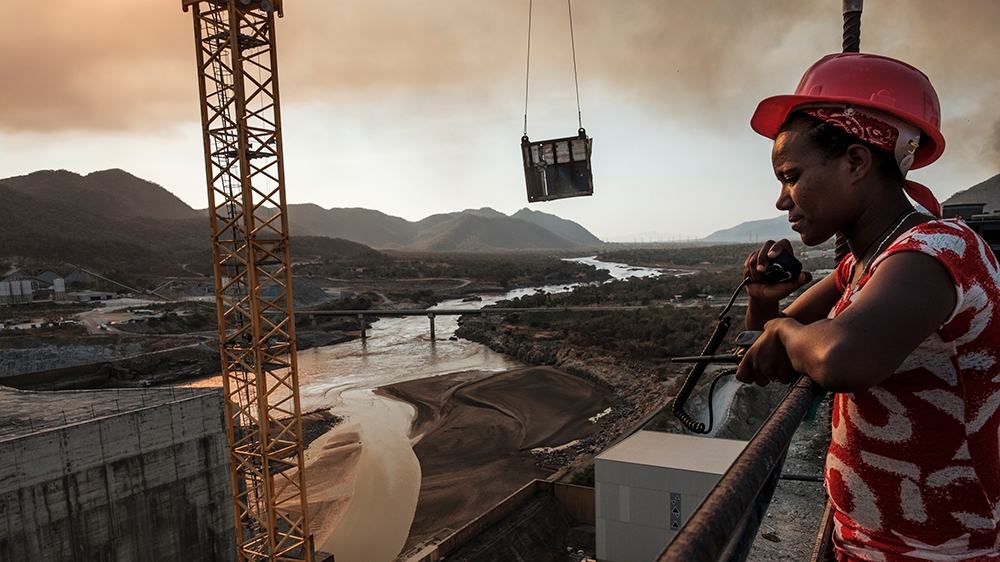Ethiopia, Egypt and Sudan launch new Nile dam talks in DRC
Table of Contents
Ethiopia, Egypt and Sudan launch new Nile dam talks in DRC
![Egypt and Sudan want a legally binding agreement on the dam’s filling and operation, while Ethiopia insists on guidelines [Eduardo Soteras/AFP]](https://www.aljazeera.com/wp-content/uploads/2020/07/f965b273822f4db2ba43e41616ae0d7c_18.jpeg?resize=120%2C80%20120w,%20/wp-content/uploads/2020/07/f965b273822f4db2ba43e41616ae0d7c_18.jpeg?resize=270%2C180%20270w,%20/wp-content/uploads/2020/07/f965b273822f4db2ba43e41616ae0d7c_18.jpeg?resize=375%2C250%20375w,%20/wp-content/uploads/2020/07/f965b273822f4db2ba43e41616ae0d7c_18.jpeg?resize=570%2C380%20570w,%20/wp-content/uploads/2020/07/f965b273822f4db2ba43e41616ae0d7c_18.jpeg?resize=770%2C513%20770w)
A new round of African Union-mediated talks between Ethiopia, Egypt and Sudan has begun aimed at resolving a years-long dispute over a massive dam built by Addis Ababa on the Blue Nile, a main tributary of the Nile river.
The three-day talks that kicked off on Saturday are taking place in Kinshasa, the capital of the Democratic Republic of the Congo, the current chair of the AU.
Foreign and irrigation ministers of the three nations were attending the talks over the Grand Ethiopian Renaissance Dam (GERD), along with AU experts, according to Ethiopia’s Irrigation Minister Seleshi Bekele.
A Sudanese diplomat was quoted as saying by The Associated Press news agency that the experts from the three countries and the AU met on Saturday, ahead of ministers who would meet on Sunday and Monday. He spoke on condition of anonymity because he was not allowed to brief media.
Egypt’s foreign ministry said in a statement that Cairo wants the negotiations to eventually lead to a legally binding agreement over the operation and filling of the dam’s giant reservoir.
Sudan said it would take part in the Kinshasa round with an aim of agreeing on a “negotiating approach” to ensure the talks would be constructive. That would include an Egyptian-backed Sudanese proposal for the United States, European Union and United Nations to actively mediate in the dispute, along with the AU.
Ethiopia has rejected the proposal, saying it “believes in resolving African problems by Africans”.
The dispute centres on the speed at which a planned reservoir is filled behind the dam, the method of its annual replenishment and how much water Ethiopia will release downstream if a multi-year drought occurs. Another point of difference is how the three countries would settle any future disputes.
Downstream countries Egypt and Sudan want a legally binding agreement on the dam’s filling and operation, while Ethiopia insists on guidelines.
The three countries have been locked for almost a decade in inconclusive talks over the GERD, which broke ground in 2011.
The talks in Kinshasa come a few days after Egypt’s President Abdel Fattah el-Sisi said his country’s share of Nile River waters were “untouchable” – a stark warning apparently to Ethiopia, which is preparing for another stage of the dam’s filling later this year.
El-Sisi warned on Tuesday of “instability that no one can imagine” in the region if the dam’s reservoir is filled and operated without a legally binding agreement.
Bekele, the Ethiopian minister, said his country “as always is determined for principled, equitable and reasonable utilization without causing significant harm,” according to Ethiopia’s official news agency.
Egypt, the Arab world’s most populous country with more than 100 million people, depends on the Nile for almost all of its water needs. It fears that a quick fill would drastically reduce the river’s flow, with potentially severe effects on its agriculture and other sectors.
Ethiopia says GERD is essential for its development, arguing that the vast majority of its population lacks electricity. The dam will generate more than 6,400 megawatts of electricity, a massive boost to the country’s current production of 4,000 megawatts.
Sudan wants Ethiopia to coordinate and share data on the dam’s operation to avoid flooding and protect its own power-generating dams on the Blue Nile.
The Blue Nile meets with the White Nile in central Sudan. From there the Nile winds northward through Egypt and flows into the Mediterranean Sea.





